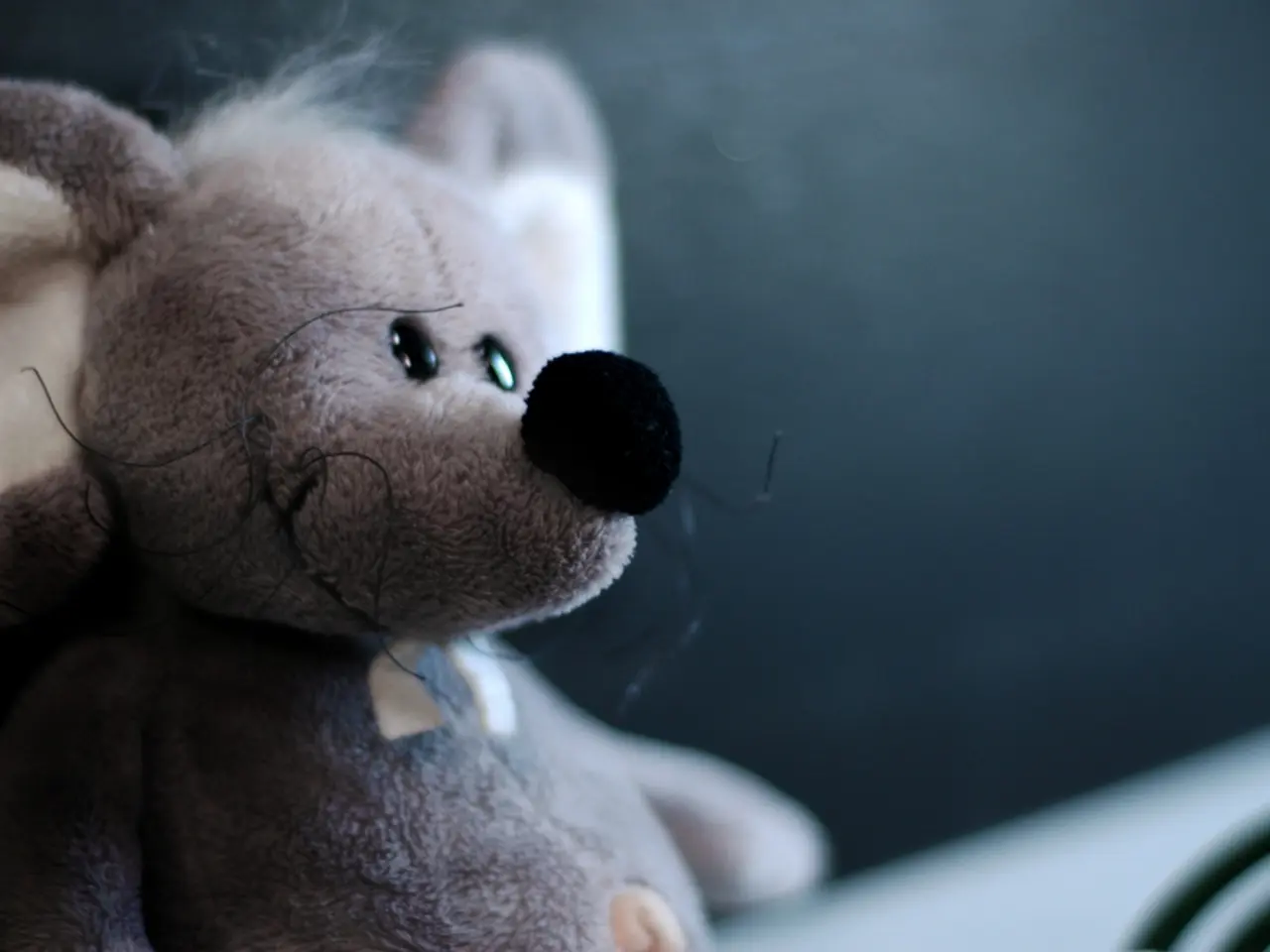Doll icon Barbie's founding inspiration stemmed from a made-up, high-end prostitute character from Germany.
In the heart of Europe, in 1952, a controversial character named Lilli was born in the pages of Germany's Bild tabloid comic strip. Created by comic artist Reinhard Beuthien, Lilli was aimed at adults, with a somewhat provocative image that was reminiscent of a risqué gag gift for adults, often associated with a fictional call girl figure in the tabloid [1].
Lilli quickly gained popularity, and in 1955, she was transformed into a doll, known as Bild Lilli. The doll, with her scantily clad curves, high blonde ponytail, and high heels, was more akin to a pin-up girl than a children's toy [1]. Despite this, she became popular among children who enjoyed dressing her in various outfits [1].
Fast forward to 1956, Ruth Handler, co-founder of Mattel, stumbled upon Lilli in a shop window in Lucerne, Switzerland. Handler, inspired by her daughter playing with paper dolls and wanting an adult-bodied doll for children to role-play grown-up roles beyond baby dolls, saw the potential in Lilli [1][2]. She purchased several Lilli dolls, brought them back to the U.S., and reworked the design to create Barbie, named after her daughter Barbara [1][3][4].
Barbie, with her glamorous image, made her debut at the 1959 American International Toy Fair [1][3][4]. The creation of Barbie, in part, traces back to Lilli's adult, fashionable origins [3]. However, Handler redesigned the doll to appeal to American children, removing some of Lilli’s more adult connotations [1][3][4].
Over the years, Barbie has been a dominant presence in children's bedrooms worldwide, selling over a billion times [4]. Yet, the doll's themes of materialism and unrealistic body image have been a subject of criticism [3]. Today, critics view Lilli as an object of desire created to satisfy the male gaze, while Bild still describes her as "cheeky, sexy, independent" [5].
In contrast, young children around the world have diverse preferences when it comes to their favourite toys. For instance, three-year-old Julia from Tirana, Albania, has a preference for pink-colored items, while Four-year-old Chiwa of Mchinji, Malawi, has a Triceratops dinosaur as her only toy [6]. Meanwhile, Watcharapon (3) from Bangkok, Thailand plays with small colorful motorcycles, imitating his father who rides a motor scooter to work [6].
Photographer Gabriele Galimberti, in his worldwide journey, captured these diverse preferences, showcasing the universal love for toys in children [7]. From Orly from Brownsville, Texas, USA, with her collection of dinosaurs, to Maudy (3) from a small village near Kalulushi, Zambia, who discovered a box full of sunglasses and uses them as her favourite toys [7], the world of children's toys is as varied as the children themselves.
Interestingly, Barbie was the inspiration for one of the highest grossing films of all time [4]. Despite the controversy surrounding her, Barbie continues to be a symbol of imagination and play for countless children around the world.
[1] https://www.bbc.com/culture/article/20150414-the-controversial-origins-of-barbie [2] https://www.history.com/news/the-real-story-of-barbie-and-ken [3] https://www.theatlantic.com/entertainment/archive/2015/04/the-real-story-of-barbie-and-ken/388585/ [4] https://www.washingtonpost.com/news/wonk/wp/2015/04/14/the-real-story-of-barbie-and-ken/ [5] https://www.bbc.com/culture/article/20150414-the-controversial-origins-of-barbie [6] https://www.bbc.com/news/world-38424471 [7] https://www.bbc.com/culture/gallery/20150326-the-world-in-toys
- Despite her origins in Germany, the Barbie doll, an icon of American pop-culture and entertainment, has influenced media, news, and books worldwide due to her controversial history and imagery.
- Comparatively, the preferences of children's toys in diverse parts of the world, such as Orly's dinosaurs in Texas, USA, Maudy's sunglasses in Zambia, and Watcharapon's motorcycles in Thailand, reflect a more global and individualized perspective on entertainment and play, different from the single-dominant presence of Barbie.
- The world news, books, and pop-culture continue to discuss not only Barbie's impact but also the ongoing debates regarding her imagery, themes, and adult connotations, while giving voice to alternative toys and preferences within and outside America.





